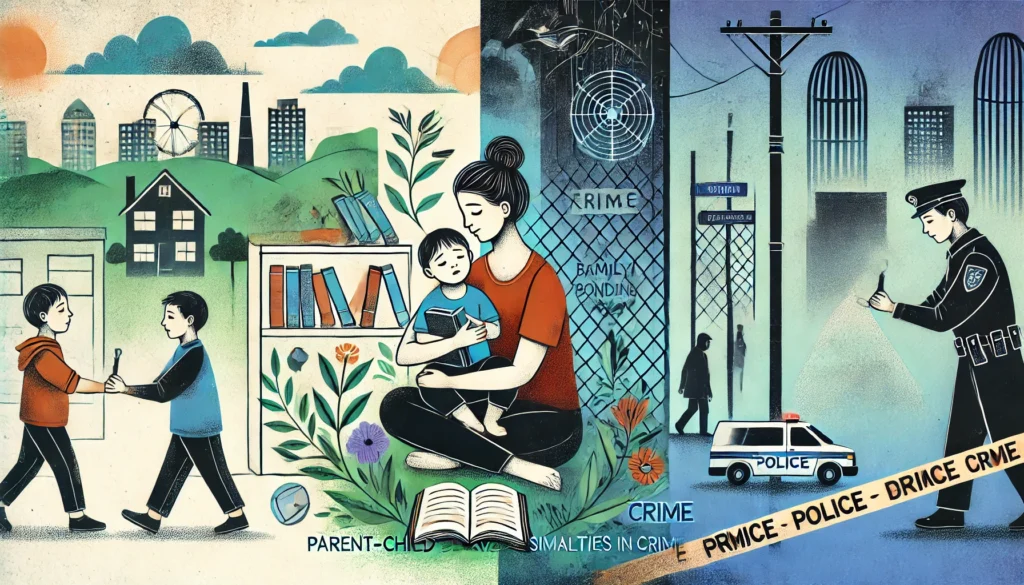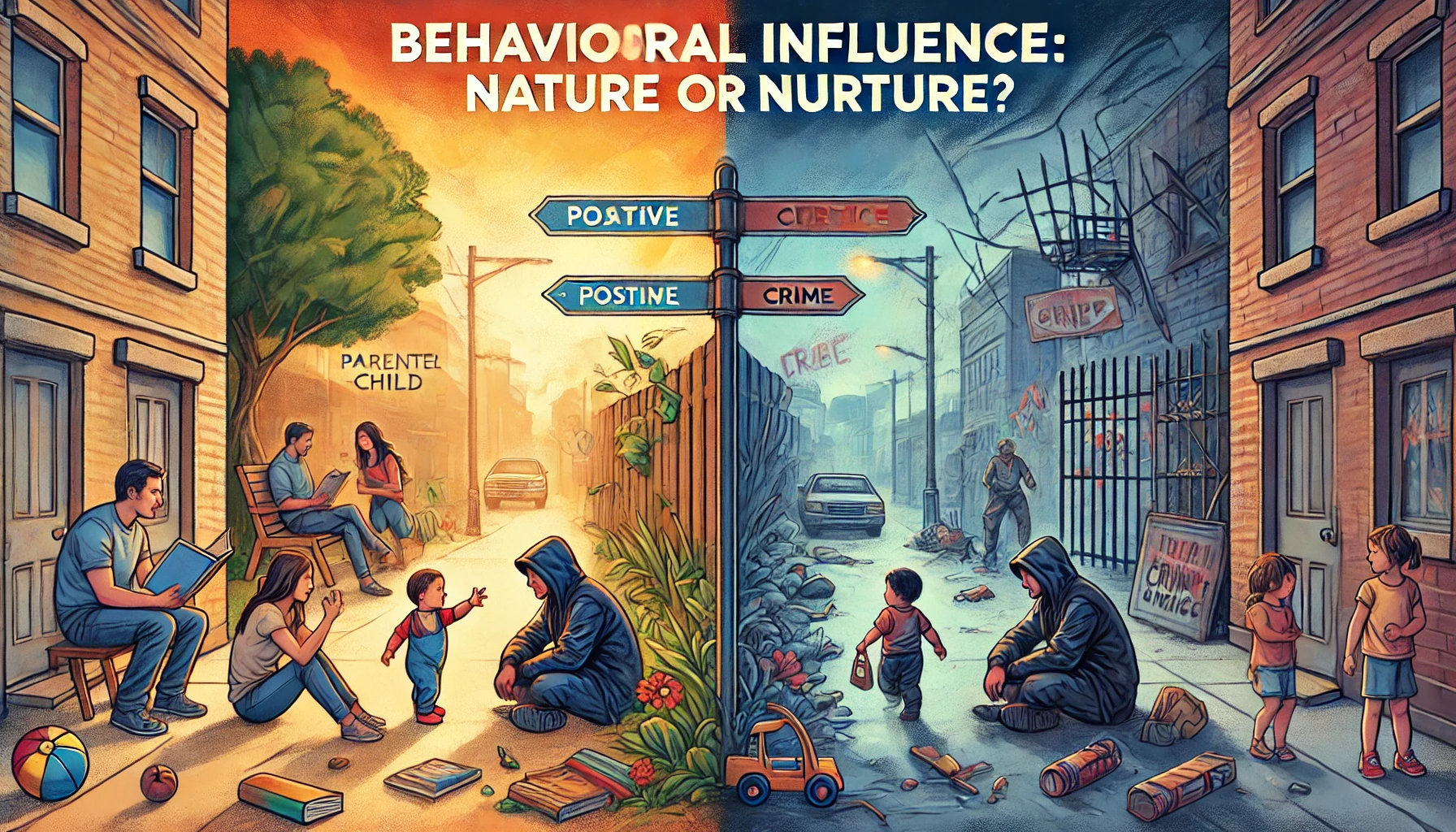Understanding the transmission of criminal behavior within families has long been a focus of criminology and psychology. Parent-child behavioral similarities in crime highlight the complex interplay of genetics, upbringing, and environmental factors. Why do certain traits or behaviors appear to pass from one generation to the next? This article explores the factors contributing to such similarities, the role of genetics versus environment, key studies in the field, and the implications for crime prevention and rehabilitation.
The Foundations of Parent-Child Behavioral Similarities
Parent-child similarities in behavior often stem from a combination of inherited genetic predispositions and shared environmental influences. These foundations can be understood through the following dimensions:
Genetic Influence
Genetics play a significant role in shaping an individual’s temperament, personality traits, and even behavioral tendencies that could predispose them to crime. For example:
- Aggressiveness and Impulsivity: Traits linked to criminal behavior, such as aggressiveness and impulsivity, often have genetic components.
- Heritable Disorders: Conditions like antisocial personality disorder or ADHD, which may contribute to criminal tendencies, can run in families.
Environmental Influence
While genetics provide the blueprint, the environment shapes how these predispositions manifest. Key environmental factors include:
- Parenting Styles: Neglect, harsh discipline, or lack of supervision can increase the likelihood of criminal behavior in children.
- Socioeconomic Status: Poverty, exposure to crime, and limited opportunities can perpetuate cycles of criminal behavior.
- Role Modeling: Children often mimic the behaviors of their parents, whether positive or negative.
Nature vs. Nurture in Criminal Behavior
The ongoing debate between nature and nurture plays a central role in understanding parent-child behavioral similarities in crime. Studies show that both aspects interact in complex ways to shape behavior:
Genetic Studies
- Twin and Adoption Studies: Research comparing adopted children with their biological and adoptive parents demonstrates a significant genetic component in criminal behavior.
- Specific Genetic Markers: Variants such as the MAOA gene, sometimes called the “warrior gene,” have been linked to increased aggression, especially when coupled with adverse childhood experiences.
Environmental Studies
- Intergenerational Transmission of Poverty: Families in low-income neighborhoods are more likely to encounter conditions that foster criminal behavior.
- Trauma and Abuse: Exposure to violence or abuse in childhood can lead to increased risks of engaging in crime later in life.
Key Research on Parent-Child Criminal Behavior
Several landmark studies have provided insights into the connections between parent and child criminality:
- The Cambridge Study in Delinquent Development:
- This longitudinal study followed boys from working-class London neighborhoods and found that children of convicted parents were more likely to offend themselves.
- The Rochester Youth Development Study:
- Found that parental involvement in crime, especially maternal criminality, significantly increased the likelihood of children’s involvement in delinquency.
- The Farrington Studies:
- Demonstrated that intergenerational transmission of offending was particularly strong for certain types of crimes, such as theft and violent offenses.
Mechanisms of Intergenerational Transmission
Understanding the mechanisms behind behavioral similarities helps identify intervention points:
Social Learning
- Observational Learning: Children exposed to criminal behavior within the family may adopt similar behaviors.
- Normalization of Crime: Growing up in a household where crime is normalized can desensitize individuals to its consequences.
Genetic Predisposition
- Inherited Traits: Traits such as impulsivity and aggression can predispose individuals to criminal behavior.
- Gene-Environment Interaction: Genetic predispositions may only manifest in specific environmental conditions.
Structural Factors
- Neighborhood Effects: Families living in crime-prone areas face higher risks of engaging in delinquent behavior.
- Educational Opportunities: Limited access to quality education reduces upward mobility, perpetuating cycles of crime.

Implications for Crime Prevention
Addressing parent-child behavioral similarities in crime requires a multi-faceted approach:
- Early Intervention:
- Programs targeting at-risk families can disrupt the transmission of criminal behavior.
- Parenting workshops can teach effective discipline and communication skills.
- Education and Employment:
- Providing access to education and job opportunities can break cycles of poverty and crime.
- Therapeutic Interventions:
- Family therapy can address underlying issues contributing to behavioral problems.
- Cognitive-behavioral therapy (CBT) helps individuals manage impulsivity and aggression.
- Community Support:
- Mentorship programs and community initiatives can provide positive role models for children.
Ethical Considerations
Researching and addressing parent-child behavioral similarities in crime involves ethical challenges:
- Avoiding Stigmatization: Labeling families as “criminal” can reinforce negative stereotypes and limit opportunities.
- Balancing Accountability and Understanding: While genetics and environment influence behavior, individuals must still be held accountable for their actions.
- Confidentiality: Protecting the privacy of families participating in studies is essential.
Conclusion
Parent-child behavioral similarities in crime offer profound insights into the interconnected roles of nature and nurture. Genetics, family environment, and broader societal factors all contribute to the transmission of criminal tendencies. By understanding these dynamics, society can develop targeted interventions to break cycles of crime, support at-risk families, and foster healthier environments. Continued research and ethical practices will be essential in addressing the root causes of criminal behavior and promoting long-term prevention strategies.

